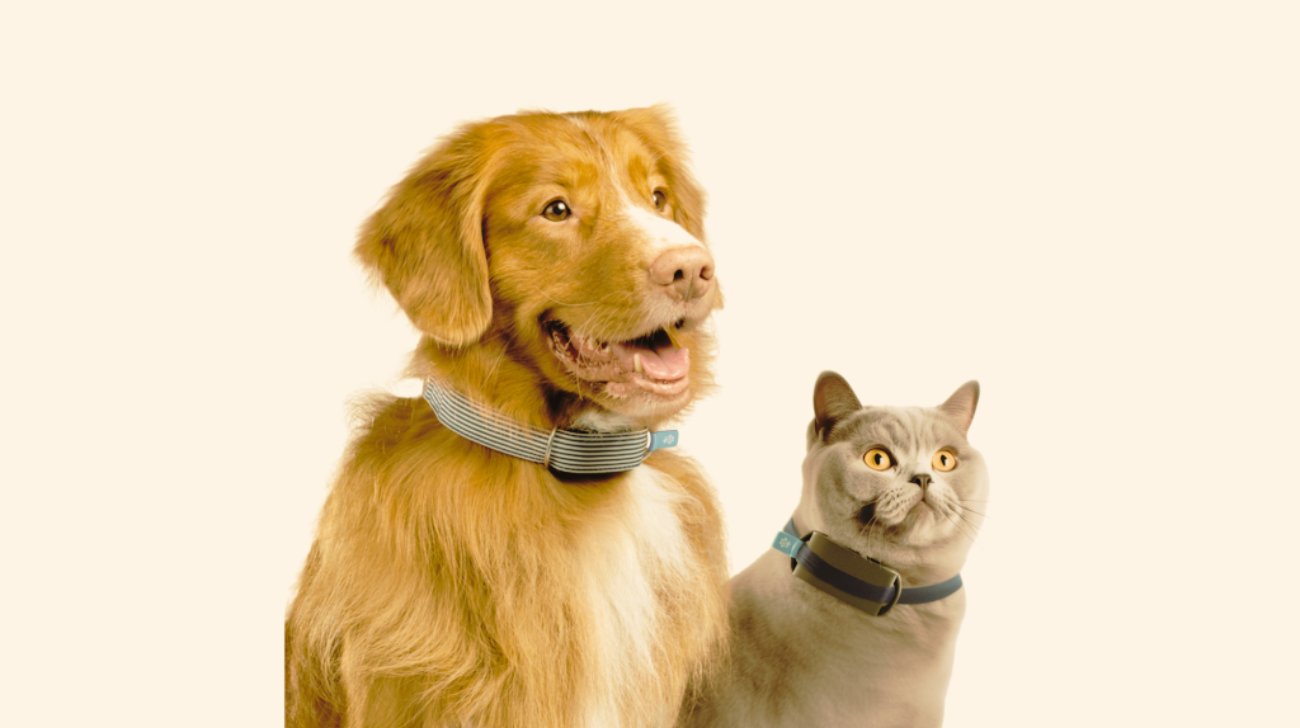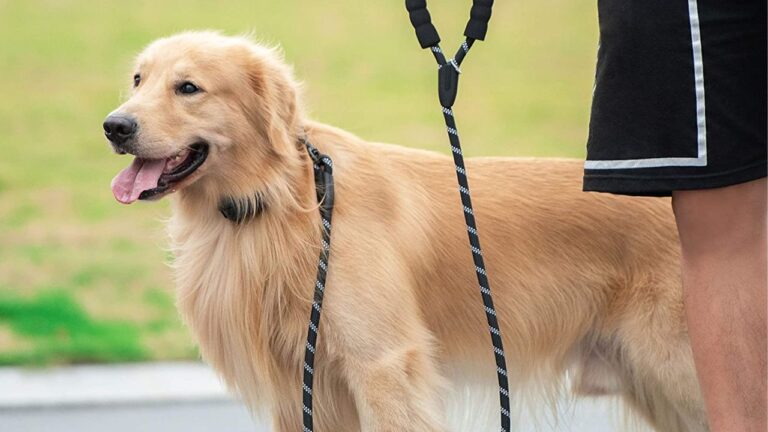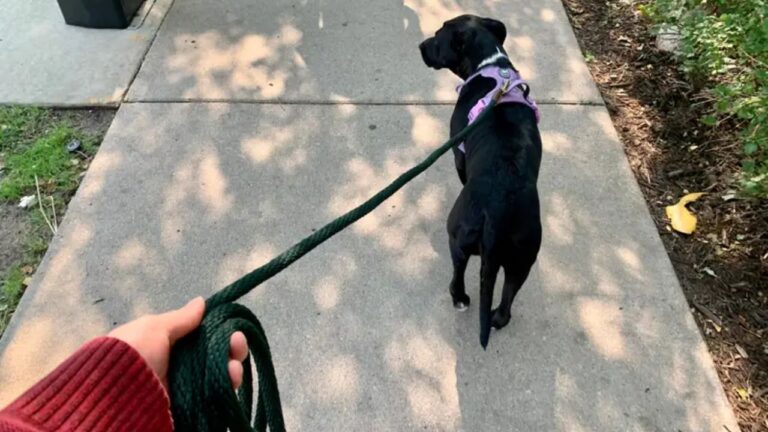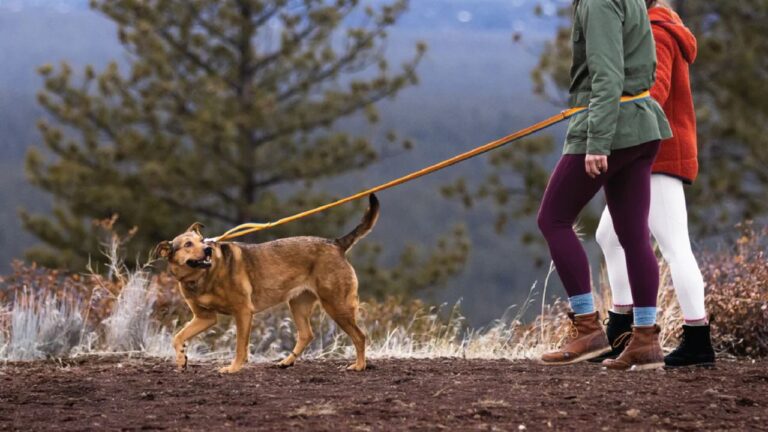Choosing the right collar for your pet is a fundamental aspect of responsible pet ownership. Whether you’re a seasoned dog owner or a first-time cat parent, understanding the differences between dog vs cat collar is crucial. This decision goes beyond mere aesthetics; it significantly impacts your pet’s comfort, safety, and overall well-being during walks, training sessions, and daily activities.
To find the perfect fit, learn more about what size collar for a Bichon, ensuring your dog’s comfort and safety.
Both dog and cat collars serve essential purposes but are designed with different functionalities and needs in mind. By understanding the unique features, benefits, and potential drawbacks of each, you can make an informed choice that best suits your pet’s requirements and your lifestyle.
My Personal Opinion
Having owned both dogs and cats with varying temperaments and training needs, I’ve found that the choice between dog vs cat collar often hinges on the individual pet’s behavior and the owner’s lifestyle. Dog collars are indispensable for everyday identification, basic control, and training, offering versatility and ease of use.
On the other hand, cat collars require special considerations due to their curious and independent nature, focusing more on safety and comfort to prevent choking or escape attempts. Ultimately, the best choice involves selecting collars tailored to each species’ specific needs, ensuring both functionality and comfort.
Blog Highlights
ToggleWhat Is a Dog Collar?
A dog collar is a band worn around a dog’s neck, serving multiple purposes including identification, control, and training. It is the most traditional form of dog accessory and plays a crucial role in daily dog management. Discover the ideal option by exploring what is the best collar material for a Bichon Frise to ensure your pet’s comfort and durability.
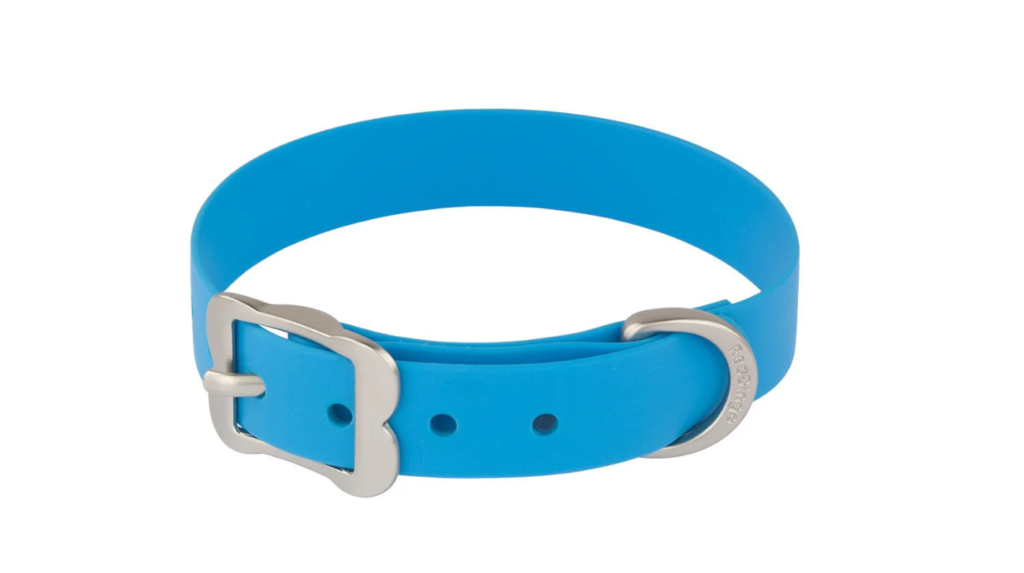
Key Features of a Dog Collar:
- Material Variety: Dog collars are available in a wide range of materials such as nylon, leather, biothane, and metal. Each material offers different levels of durability, comfort, and style.
- Adjustable Fit: Most dog collars are adjustable to ensure a snug yet comfortable fit. This adjustability allows the collar to accommodate a growing puppy or changes in weight.
- Attachment Points: Dog collars typically feature one or more D-ring attachments for leashes, ID tags, and other accessories. The standard attachment is a metal D-ring, although some collars may have swivel or quick-release clips for added functionality.
- Styles: There are various styles of dog collars, including flat collars, buckle collars, martingale collars, and breakaway collars. Each style is designed to meet specific needs and preferences.
Benefits of the Dog Collar:
- Identification: One of the primary functions of a dog collar is to hold identification tags, which are crucial if your dog gets lost. This includes tags with your contact information and, in some cases, medical information.
- Training Tool: Dog collars provide a direct means of control, making them effective for training basic commands and leash manners. They allow for easy communication between the owner and the dog during walks and training sessions.
- Simplicity and Convenience: Dog collars are easy to put on and take off, making them convenient for daily use. Their straightforward design means minimal maintenance and hassle.
- Variety of Designs: With countless styles, colors, and patterns available, dog collars allow for personalization and can reflect your dog’s personality and your personal style.
Limitations of the Dog Collar:
- Neck Strain: Pulling or tugging on the leash can cause strain or injury to your dog’s neck, especially in strong pullers. This is because the pressure is concentrated on the neck area.
- Limited Pressure Distribution: Dog collars focus pressure on the neck, which can be problematic for dogs with respiratory issues or sensitive throats. This can lead to discomfort or even injury over time.
- Potential for Choking: If a dog gets caught on something, a dog collar can tighten, posing a choking hazard. This risk is heightened for dogs that are adept at slipping out of their collars.
What Is a Cat Collar?
A cat collar is a lightweight band worn around a cat’s neck, primarily used for identification and safety. Unlike dog collars, cat collars are designed with features that cater to a cat’s unique behaviors, such as climbing and exploring, to prevent accidents and ensure comfort.
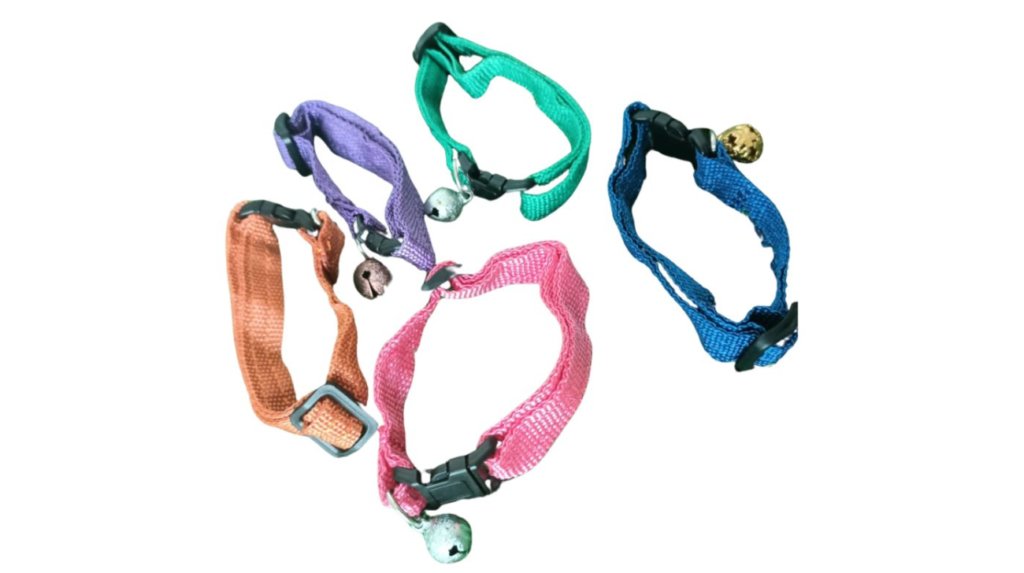
The American Staffordshire Terrier’s coat type is short, sleek, and easy to maintain with regular brushing.
Key Features of a Cat Collar:
- Breakaway Design: Most cat collars feature a breakaway mechanism that snaps open under pressure to prevent choking if the cat gets tangled or caught on something.
- Lightweight Materials: Cat collars are typically made from lightweight materials like nylon or soft fabrics to ensure they do not cause discomfort or restrict movement.
- Identification Tags: Cat collars often have space for ID tags, which can include the cat’s name, owner’s contact information, and sometimes medical details.
- Adjustable Fit: Similar to dog collars, cat collars are adjustable to ensure a snug but comfortable fit. This adjustability is crucial for accommodating a cat’s neck size and preventing the collar from slipping off.
- Reflective Features: Many cat collars come with reflective strips or materials to increase visibility during low-light conditions, enhancing safety during outdoor adventures.
Benefits of the Cat Collar:
- Identification: Cat collars provide a visible means of identification, crucial if your cat wanders off or gets lost. This increases the chances of your cat being returned safely.
- Safety: The breakaway feature ensures that the collar will release if the cat gets stuck, preventing choking or injury. This is especially important for cats that climb or explore frequently.
- Visibility: Reflective collars enhance a cat’s visibility in low-light conditions, reducing the risk of accidents and making it easier for you to spot your cat during outdoor activities.
- Comfort: Lightweight and soft materials ensure that the collar is comfortable for the cat to wear without causing irritation or restricting movement.
- Style and Personalization: Cat collars come in various colors, patterns, and designs, allowing owners to personalize their cat’s appearance while ensuring functionality.
Limitations of the Cat Collar:
- Limited Control: Unlike dog collars, cat collars are not designed for control or training purposes. They primarily serve identification and safety functions.
- Potential for Loss: Despite the breakaway mechanism, there is still a possibility that a collar could be lost or come off, especially if the cat is very active or adventurous.
- Not Suitable for All Cats: Some cats may not tolerate wearing collars, preferring to roam without any neck accessories. For these cats, alternative identification methods like microchipping might be more appropriate.
Comparing Dog vs Cat Collar: Key Differences
Understanding the key differences between dog vs cat collar is essential for making an informed decision that best suits your pet’s needs. Here’s a side-by-side comparison of their primary features and functionalities:
Detailed Differences Between Dog vs Cat Collar
To further understand how dog collars and cat collars differ, let’s delve deeper into various aspects such as design, control, comfort, safety, training effectiveness, and suitability for different pets.
The best collar size for an American Staffordshire Terrier ensures a comfortable and secure fit for your dog during walks and training.
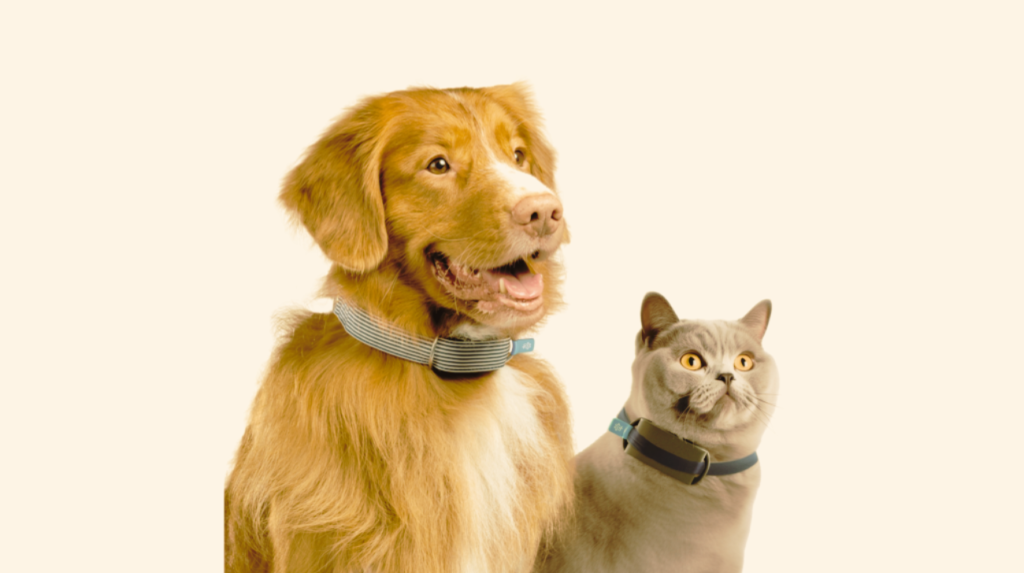
1. Design and Structure
Dog Collar:
A dog collar is typically a robust band that encircles the dog’s neck. It is made from durable materials such as nylon, leather, or biothane and features a sturdy D-ring for leash attachment. Dog collars come in various widths and styles, including flat collars for everyday use, martingale collars for preventing slipping, and breakaway collars for added safety.
Cat Collar:
A cat collar is generally lighter and more flexible, designed to accommodate a cat’s agility and tendency to explore. Most cat collars feature a breakaway or safety buckle that snaps open under pressure to prevent choking. They are made from lightweight materials like nylon or soft fabrics and often include reflective strips for increased visibility.
Key Difference:
The primary difference lies in the build and safety features. Dog collars are built to withstand pulling and provide control, while cat collars prioritize safety and comfort with features like breakaway mechanisms to prevent choking.
2. Control and Effectiveness
Dog Collar:
Dog collars provide direct control over the dog’s movements, making them essential for training and managing behavior during walks. They allow owners to teach commands like “sit,” “stay,” and “heel,” and are indispensable for maintaining control in various environments.
Cat Collar:
Cat collars offer minimal control, as they are not designed for training or leash walking in the same way dog collars are. Instead, they focus on identification and safety. While some cat collars come with light leashes for supervised outdoor time, they do not provide the same level of control as dog collars.
Key Difference:
Dog collars are integral to training and behavioral management, offering direct control, whereas cat collars are primarily for identification and safety without the functionality for control.
3. Comfort and Safety
Dog Collar:
When used improperly, dog collars can cause neck strain or injury, especially in dogs that pull frequently. Proper fitting is crucial to ensure comfort and prevent choking or neck strain. Some dog collars include padding to enhance comfort, but the focus remains on durability and control.
Cat Collar:
Cat collars are designed with maximum comfort and safety in mind. The breakaway mechanism ensures that the collar will release if the cat gets caught, preventing choking. Lightweight materials and soft designs reduce the risk of irritation, making them comfortable for prolonged wear.
Key Difference:
Dog collars prioritize control and durability, which can sometimes compromise comfort if not fitted correctly. In contrast, cat collars emphasize safety and comfort, ensuring that cats can wear them without discomfort or risk of injury.
For a step-by-step guide on how to wear collar to an Affenpinscher, check out this detailed article to ensure a comfortable and secure fit for your dog.
4. Training Effectiveness
Dog Collar:
Dog collars are essential tools for training, allowing owners to reinforce commands and manage leash manners. They are used in conjunction with training techniques to shape desired behaviors, making them indispensable for effective dog training.
Cat Collar:
Cat collars are not typically used for training purposes. Instead, they serve as identification tools and safety devices. While some cat collars come with light leashes for controlled outdoor time, they do not facilitate the same level of training as dog collars.
Key Difference:
Dog collars are actively used in training and behavior management, providing a means for direct communication and control. Cat collars lack these training functionalities and are primarily focused on identification and safety.
5. Suitability for Different Pets
Dog Collar:
Dog collars are suitable for all breeds, sizes, and temperaments. Whether you have a small Chihuahua or a large German Shepherd, there is a dog collar designed to meet your pet’s specific needs. Specialized collars, like martingale collars, cater to specific behaviors such as pulling or escaping.
Cat Collar:
Cat collars are suitable for all cats, especially those that roam outdoors or spend time exploring beyond the confines of the home. They are particularly beneficial for cats that are prone to slipping out of regular collars or those that require identification for safety reasons.
Key Difference:
Dog collars are versatile and cater to a wide range of dog breeds and behaviors, while cat collars are specialized for the safety and identification needs of cats, especially those that are more adventurous or outdoor-oriented.
Check out the best dog collars for Border Collie to find durable, stylish, and comfortable options for your active dog.
Using the Tools Safely: Essential Tips
Whether you choose a dog collar or a cat collar, proper usage is crucial for ensuring your pet’s comfort and safety. Here are some essential tips for using both tools effectively.
How to Use a Dog Collar:
- Choose the Right Collar:
Select a collar that is appropriate for your dog’s size, breed, and behavior. For strong pullers, consider a martingale or a no-pull collar to enhance control and reduce neck strain. - Proper Fit:
Adjust the collar so that it fits snugly but comfortably. You should be able to fit two fingers between the collar and your dog’s neck to prevent it from slipping off or causing discomfort. - Secure Attachment:
Ensure the leash is securely attached to the D-ring on the collar. Use a sturdy leash and a reliable clasp to prevent accidental detachment during walks. - Training:
Use the collar as a training tool to teach commands and reinforce good walking behavior. Avoid yanking or harsh pulling, which can cause injury or fear. - Regular Inspection:
Check the collar regularly for signs of wear and tear. Replace the collar if it becomes frayed, damaged, or shows signs of weakening to maintain safety.
How to Use a Cat Collar:
- Select the Right Size:
Measure your cat’s neck accurately to choose the correct size collar. A properly fitted collar will allow for comfortable movement without being too tight or too loose. - Adjust for Comfort:
Adjust the collar so that it sits comfortably on your cat’s neck. Ensure there is enough room for two fingers to fit between the collar and your cat’s neck to prevent choking or discomfort. - Introduce Gradually:
If your cat is not accustomed to wearing a collar, introduce it gradually. Allow your cat to wear the collar indoors for short periods, rewarding them with treats and praise to create a positive association. - Monitor for Discomfort:
Regularly check for signs of chafing, irritation, or discomfort around your cat’s neck. Adjust the fit as needed to ensure your cat’s comfort. - Secure Attachment:
Attach identification tags securely to the collar. Consider using a quick-release or breakaway collar to ensure safety if the collar gets caught on something.
Safety Considerations:
- Supervise Usage:
Always supervise your dog or cat when using a collar to prevent accidents and ensure proper usage. - Positive Reinforcement:
Pair the use of collars with positive reinforcement techniques. Reward your pet for good behavior to encourage positive associations with the collar. - Consult a Professional:
If you’re unsure how to use a collar effectively, seek advice from a professional dog trainer, veterinarian, or a pet behaviorist. They can provide guidance tailored to your pet’s specific needs. - Regular Maintenance:
Keep the collars clean and free from debris. Regularly check for any damage or signs of wear to ensure the collar remains safe and functional. - Understand Your Pet’s Behavior:
Choose the collar that best matches your pet’s behavior and training needs. For instance, a martingale collar may be more suitable for a dog that frequently pulls, while a breakaway collar is essential for the safety of a cat that likes to explore.
For guidance on choosing the right collar size for an Airedale puppy, check out this detailed guide.
FAQs: Dog vs Cat Collar
1. What is the main difference between a dog collar and a cat collar?
A dog collar is designed for identification, control, and training of dogs, offering features like D-ring attachments for leashes and various styles to suit different breeds and behaviors. In contrast, a cat collar primarily focuses on identification and safety, featuring breakaway mechanisms to prevent choking and lightweight materials to ensure comfort for cats that are agile and curious.
2. Can cats wear collars like dogs?
Yes, cats can wear collars, but they are designed differently to cater to a cat’s unique behaviors. Cat collars typically feature breakaway buckles to prevent choking and are made from lightweight materials to ensure comfort. They are primarily used for identification and safety rather than control or training.
3. Are martingale collars suitable for cats?
Martingale collars are generally not recommended for cats. They are designed for dogs that pull or are prone to escaping, providing gentle control without choking. Cats, being more agile and independent, require collars with breakaway mechanisms to ensure safety without the added pressure or complexity of a martingale system.
4. What should I look for in a dog collar?
When choosing a dog collar, consider the following:
- Size and Fit: Ensure it fits snugly without being too tight or too loose.
- Material: Choose a durable material that suits your dog’s activity level and comfort.
- Style: Select a style that meets your training and control needs, such as flat, martingale, or no-pull collars.
- Safety Features: Look for sturdy clasps and reliable attachment points.
- Customization: Consider collars with ID tags and reflective features for added safety.
5. How often should I check my pet’s collar?
You should check your pet’s collar daily to ensure it is still securely fastened, properly fitted, and free from signs of wear or damage. Regular inspections help prevent accidents and ensure your pet remains comfortable and safe.
6. Can a collar be used as a leash?
Yes, a collar can be used as a leash by attaching a leash to the D-ring on the collar. However, for dogs that pull frequently, it may be more comfortable and safer to use a harness in conjunction with the collar to distribute pressure more evenly and reduce strain on the neck.
7. Are there collars designed specifically for indoor use?
Yes, there are collars designed specifically for indoor use, often made from softer, more comfortable materials with minimal bulk. These collars may feature breakaway buckles for added safety and are usually lighter to ensure they do not cause discomfort during indoor activities.
8. What are the signs that a collar is too tight?
Signs that a collar is too tight include:
- Inability to fit two fingers between the collar and your pet’s neck.
- Redness or irritation around the neck.
- Excessive pulling or discomfort.
- Difficulty breathing or swallowing.
If you notice any of these signs, adjust the collar immediately to ensure it fits properly.
Wrapping Up
Choosing between dog vs cat collar depends on your pet’s specific needs, behavior, and your training goals. Dog collars are essential for providing identification, basic control, and training during walks, making them indispensable for all dog owners. Cat collars, on the other hand, focus on identification and safety, ensuring that cats can roam safely without the risk of choking or getting lost. For insights on whether Airedales are good off-leash, explore this comprehensive article.
By considering your pet’s breed characteristics, temperament, and unique requirements, you can select the collar that best compliments your training and lifestyle. Remember, every pet is different, and finding the right fit may involve a bit of trial and error. But with patience and consistency, both dog and cat collars can help you and your furry friend enjoy safe, comfortable, and happy experiences together.

